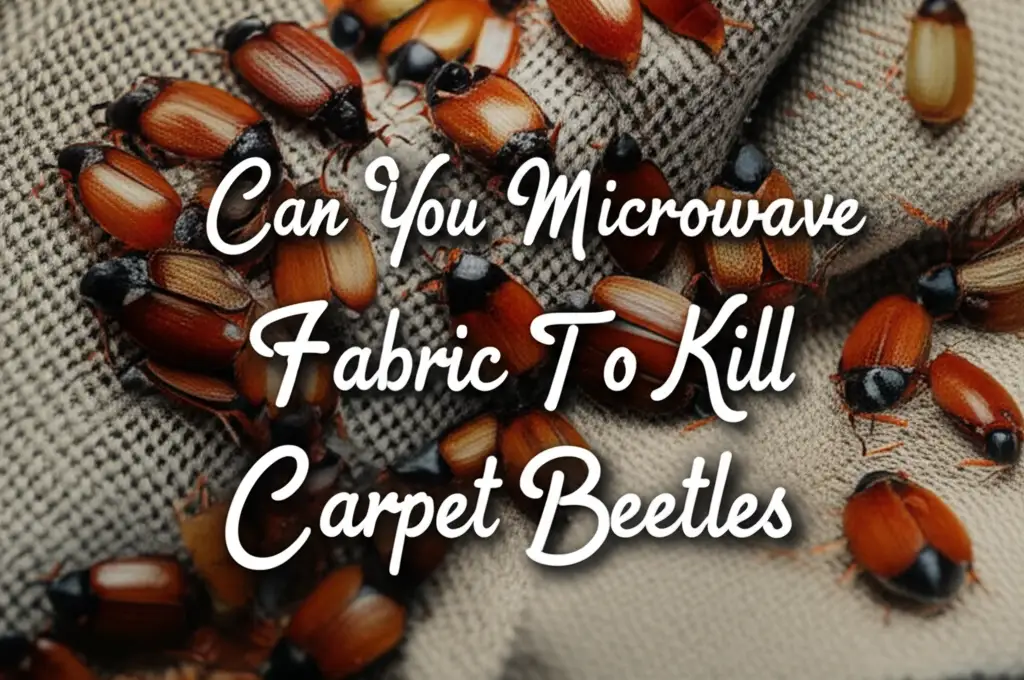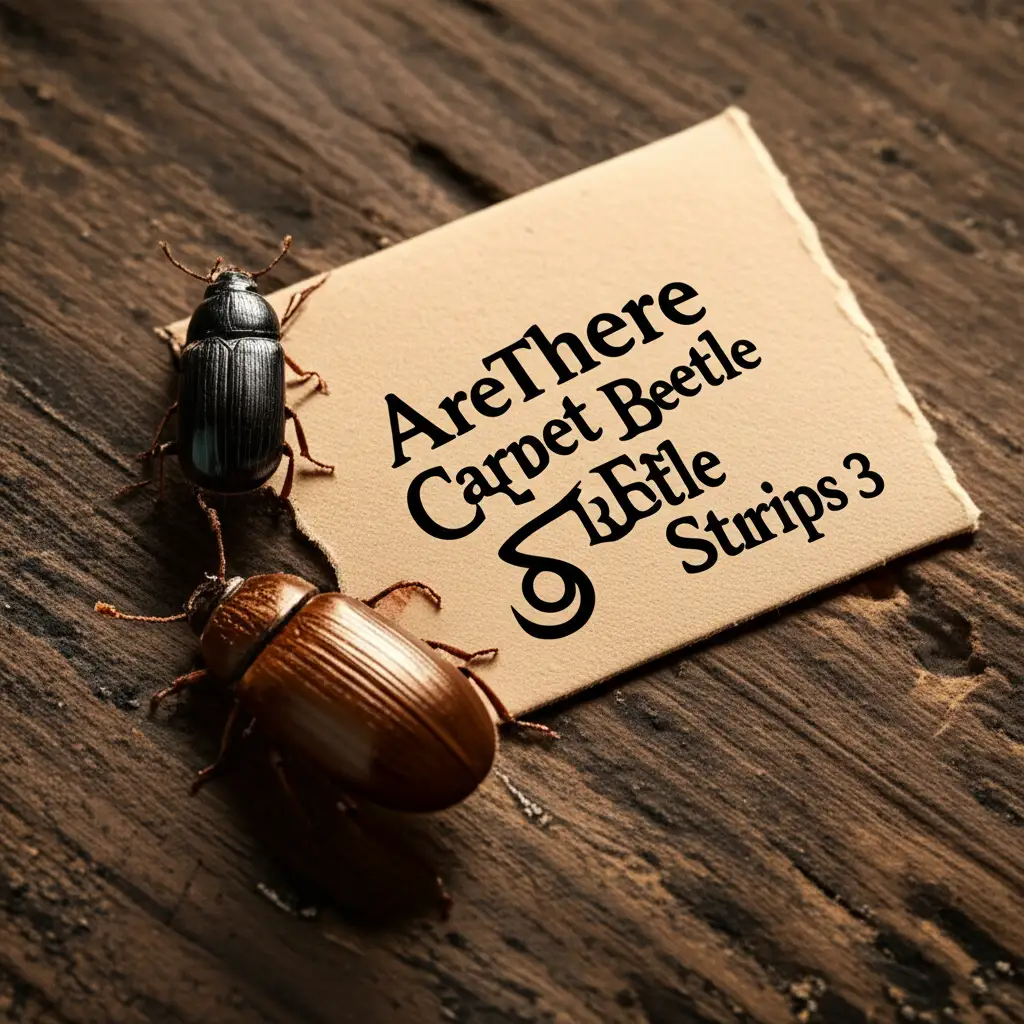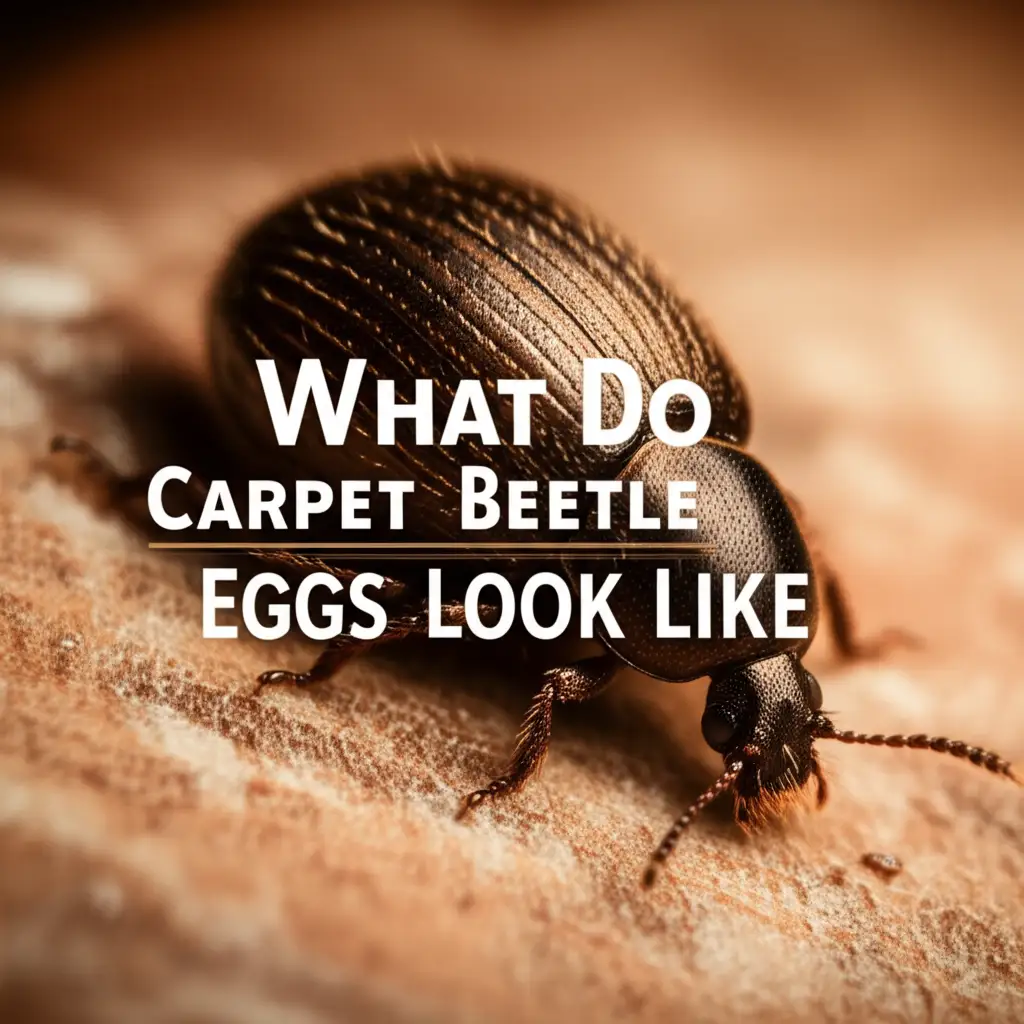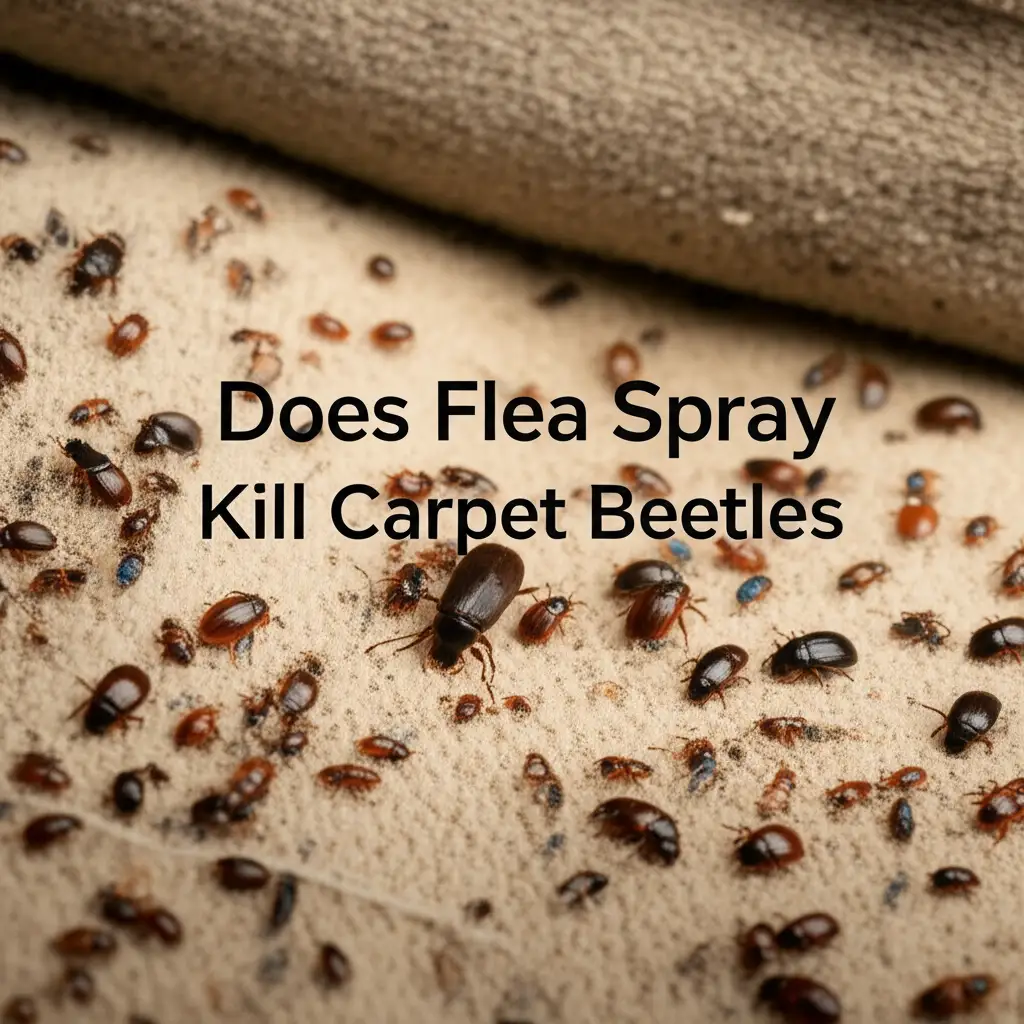· Liora Benning · Pest Control · 18 min read
Can You Microwave Fabric To Kill Carpet Beetles

Can You Microwave Fabric To Kill Carpet Beetles: A Comprehensive Guide
Discovering unwanted guests like carpet beetles in your home can be alarming. These tiny pests feed on natural fibers, causing damage to carpets, clothing, and upholstered furniture. When facing such an invasion, many people look for quick, accessible solutions. One question that often comes up is whether a common household appliance, the microwave, can offer a quick fix.
I understand the desire for immediate action against these persistent pests. You might wonder if zapping infested fabric could eliminate them. This article explores the possibility of using your microwave to kill carpet beetles. We will look at how heat affects these insects, the potential benefits and risks of microwaving fabric, and safer, more effective alternative treatments. My goal is to give you a clear understanding of what works and what does not for managing carpet beetle infestations.
Takeaway
- Heat can kill carpet beetles, but microwaving fabric carries significant risks.
- Only attempt microwaving for small, non-metallic fabric items with extreme caution.
- Fire hazards, fabric damage, and uneven heating are major concerns.
- Safer and more effective methods include hot water washing, freezing, and professional pest control.
Can You Microwave Fabric To Kill Carpet Beetles?
Yes, you can microwave fabric to kill carpet beetles, but only under very specific and limited conditions. The high heat generated by a microwave can effectively kill adult beetles, larvae, and eggs. However, this method is only suitable for small fabric items without any metal components and it carries considerable risks, including fire hazards and permanent damage to the fabric itself.
The Science of Heat and Pest Control
Heat has long been a powerful weapon against insects. Many pests, including carpet beetles, cannot withstand high temperatures for long. Understanding how heat affects these creatures helps us appreciate why it can be an effective control method.
Carpet beetles, like most insects, are cold-blooded. Their internal body temperature depends on their surroundings. When exposed to high heat, their body proteins begin to break down, and their cellular functions fail. This process, called denaturation, quickly leads to death. Adult carpet beetles, their larvae, and especially their eggs, are vulnerable to specific temperature thresholds. For instance, temperatures above 120°F (49°C) are typically lethal if sustained for a period. This is why methods like hot water washing or steam cleaning are often recommended for infested items.
These insects thrive in environments with ample food sources and stable temperatures. When conditions become too hot, they cannot regulate their body temperature, which proves fatal. This vulnerability to heat makes thermal treatments a viable option for pest management. However, applying this heat effectively and safely is crucial. Understanding why do we get carpet beetles in the first place often points to favorable environmental conditions they find in our homes, which heat treatment aims to disrupt. Conversely, do carpet beetles like cold temperatures? No, they do not, which is why freezing is also an effective method, as cold also disrupts their biological processes. Heat and cold are two sides of the same coin when it comes to thermal pest control.
Microwaving Fabric: The Pros and Cons
The idea of microwaving fabric to kill carpet beetles might seem appealing due to its speed and convenience. However, it is essential to weigh the potential benefits against significant drawbacks. Microwaves generate intense heat quickly, which can be both a blessing and a curse in pest control.
Potential Advantages of Microwaving
- Rapid Heat Generation: A microwave can heat small items almost instantly. This rapid temperature increase can quickly kill any carpet beetles, larvae, or eggs present on the fabric.
- Localized Treatment: For very small, isolated infestations on specific fabric items, microwaving offers a targeted approach. You can treat just the affected item without needing to address a larger area.
- Chemical-Free: This method does not involve any pesticides or harsh chemicals. This is a big plus for those who prefer eco-friendly solutions or have sensitivities to chemical treatments.
Significant Disadvantages and Risks
Despite the theoretical benefits, microwaving fabric for pest control comes with serious risks. These risks often outweigh any perceived advantages.
- Fire Hazard: Fabric can easily ignite in a microwave, especially if it contains synthetic fibers, has metallic threads, or is left in too long. Even natural fibers can scorch or catch fire if they get too hot. This risk is paramount and can cause significant damage to your home.
- Fabric Damage: High microwave heat can melt synthetic fabrics, shrink natural ones, or damage delicate weaves. Dyes might bleed, and the fabric’s integrity could be compromised, ruining the item.
- Uneven Heating: Microwaves heat by vibrating water molecules. Dry spots or areas without enough moisture might not reach lethal temperatures for the beetles. This means some pests could survive, leading to a recurring infestation.
- Size Limitations: Only very small items fit into a microwave. Larger pieces of clothing, blankets, or carpets are simply impossible to treat this way. This severely limits the practicality of microwaving as a general solution for carpet beetle issues.
Safety Precautions for Microwaving Fabric
If you decide to try microwaving a small, non-valuable fabric item, extreme caution is necessary. Place the fabric in a microwave-safe container with a small amount of water (or mist the fabric) to aid in heating and prevent scorching. Monitor the item continuously. Stop immediately if you see smoke, sparks, or a burning smell. Remember, these precautions only reduce risk; they do not eliminate it. Other methods are generally much safer and more effective.
What Fabrics Are Safe (or Unsafe) for Microwaving?
Choosing which fabrics, if any, can go into a microwave is crucial for safety and to prevent damage. Not all textiles are created equal when it comes to microwave heat. Understanding the composition of your fabric is the first step before considering this method.
Generally Safer Fabrics (with Extreme Caution)
Natural fibers tend to be less prone to melting than synthetics, but they can still scorch or catch fire. If you must attempt microwaving, consider these:
- 100% Cotton: Small items like cotton socks or dishcloths, without any embellishments, might tolerate brief microwaving.
- Linen: Similar to cotton, pure linen items could theoretically handle it, but the risk of scorching remains high.
- Wool: While wool can withstand some heat, it can shrink or felt dramatically in a microwave.
Even with these, always ensure the fabric is slightly damp. Water helps distribute heat and prevents immediate scorching. Use only plain, un-dyed, untreated fabrics for the lowest risk.
Fabrics to Absolutely Avoid Microwaving
Many fabrics pose an extreme fire hazard or will be instantly ruined in a microwave. Do not put these in your microwave:
- Synthetics (Polyester, Nylon, Acrylic, Rayon, Spandex): These materials are made from plastics and will melt quickly, potentially fusing to your microwave or catching fire. The melting plastic can also release toxic fumes.
- Blends: Any fabric blend containing synthetic fibers should be avoided. The synthetic components will melt, ruining the item.
- Fabrics with Metal Components: Any item with zippers, buttons, sequins, metallic threads, or glitter is a severe fire hazard. Metal sparks in a microwave, which can damage the appliance and start a fire.
- Delicate Fabrics (Silk, Satin, Lace): These materials are too fragile for the intense, uneven heat of a microwave. They will likely be damaged beyond repair. If you are wondering how to clean delicate fabrics, like
how to clean satin fabric, microwaving is definitely not the answer; gentle hand washing or dry cleaning is often required. - Fabrics with unknown composition: If you are unsure what a fabric is made of, do not microwave it. The risk of damage or fire is too great.
Testing Fabric Before Microwaving
Never put a valuable or cherished item in the microwave for pest control. If you choose to proceed with a non-valuable item, test a tiny, inconspicuous spot first. Wet the spot, microwave for a few seconds on low power, and check for any adverse reactions like scorching, melting, or discoloration. This small test might give you a hint, but it does not guarantee safety for the whole item. The high risk still makes other methods far more appealing.
A Step-by-Step Guide to Microwaving Small Items (If You Must)
While I generally advise against microwaving fabric due to the risks, I understand some people might still consider it for tiny, non-valuable items. If you choose this path, follow these steps with extreme caution. This method is only for items like a single sock, a small swatch of fabric, or a very small, non-metallic scarf.
Preparation is Key:
- Inspect the item: Make sure the fabric is small and contains absolutely no metal (zippers, buttons, metallic threads, embellishments). Even a tiny piece of metal can cause sparks and fires.
- Dampen the fabric: Lightly moisten the fabric. This helps the microwave energy heat the item more evenly and reduces the risk of scorching or fire. Do not soak it; just a light misting or running it under a faucet and wringing it out well is enough.
- Use a microwave-safe container: Place the slightly damp fabric in a clean, microwave-safe bowl or plate. Do not just put it directly on the microwave’s turntable.
Microwave Settings and Time:
- Start low and slow: Do not use full power immediately. Begin with medium-high power (70-80%).
- Short bursts: Microwave for very short intervals, typically 15-30 seconds at a time. The goal is to reach lethal temperatures for the beetles (above 120°F or 49°C) but not to cook or burn the fabric.
- Monitor constantly: Stay by the microwave and watch the item. Look for any signs of smoke, burning smell, or sparking. Stop immediately if you observe any of these.
Post-Microwave Care:
- Cool down: The fabric will be very hot when removed. Use oven mitts or tongs. Let it cool completely on a heat-resistant surface before handling.
- Inspect thoroughly: Once cool, carefully inspect the fabric for any signs of damage (scorching, melting, discoloration). Also, check if any beetles or larvae survived. They might appear shriveled or crispy.
- Repeat if necessary (with extreme caution): If you still see signs of life and the fabric is undamaged, you can try another short burst, but the risks increase with repeated heating.
Remember, this is a high-risk, low-reward method. For any significant infestation or valuable items, safer and more effective treatments are available. Why do we get carpet beetles in our homes often points to larger issues that microwaving cannot solve.
Effective Alternatives to Microwaving for Carpet Beetles
Given the significant risks and limitations of microwaving, it is important to know that many safer and more effective methods exist for treating carpet beetle infestations. These alternatives range from simple household remedies to professional interventions.
Thermal Treatments (Safer Heat/Cold)
- Hot Water Washing: For washable fabrics and clothing, washing in hot water (at least 120°F or 49°C) is highly effective. Add detergent and tumble dry on high heat for at least 30 minutes. This is one of the easiest and most reliable ways to kill all life stages of carpet beetles.
- Freezing: For delicate items or those not suitable for washing, freezing can be effective. Place infested items in sealed plastic bags and put them in a freezer at 0°F (-18°C) for at least 72 hours. The prolonged cold kills the beetles, larvae, and eggs. This method is excellent for items that
do carpet beetles like coldconditions for survival. - Steam Cleaning: A steam cleaner can be used for carpets, upholstery, and drapes. The hot steam penetrates fibers, killing beetles on contact. Ensure the steam reaches deep into the fabric for maximum effectiveness.
Physical Removal and Cleaning
- Thorough Vacuuming: Regular and thorough vacuuming is critical. Use a vacuum with strong suction and attachments to reach cracks, crevices, baseboards, and under furniture. Dispose of the vacuum bag immediately after use, sealing it in a plastic bag before putting it in an outdoor trash can.
- Sticky Traps: While not a solution for eliminating an infestation, sticky traps can help monitor beetle activity and catch adult beetles. Place them near windows or suspected entry points.
Chemical and Natural Treatments
- Diatomaceous Earth (DE): Food-grade diatomaceous earth is a natural powder made from fossilized diatoms. It works by dehydrating insects. Sprinkle a thin layer in cracks, crevices, under furniture, and along baseboards. Leave it for a few days, then vacuum it up. It is safe for pets and humans when food-grade.
- Insecticides: For severe infestations, targeted insecticides can be used. Look for products specifically labeled for carpet beetles. Always follow product instructions carefully and consider hiring a professional if using stronger chemicals. While the product
will home defence kill bed bugs, similar principles apply to other crawling insects like carpet beetles, meaning some broad-spectrum insecticides can be effective. - Natural Repellents: Certain essential oils like peppermint or cedarwood are believed to deter carpet beetles. While not a killer, they might help discourage new infestations when used in sachets or diffused. Knowing
what do carpet beetles hatecan guide you toward these natural deterrents.
Comprehensive Pest Management Strategies
Successful carpet beetle control often requires a multi-pronged approach. Combine cleaning with thermal treatments and targeted applications. Persistence is key, as beetle eggs can be tiny and hard to spot. Regular inspections and immediate action upon finding any signs of beetles will help keep your home pest-free.
Preventing Future Carpet Beetle Infestations
Eliminating an existing carpet beetle infestation is only half the battle. Preventing their return is crucial for long-term peace of mind. These pests are resourceful, but consistent preventive measures can make your home much less inviting to them.
Maintain Impeccable Cleanliness:
- Regular Vacuuming: This is your best defense. Vacuum carpets, rugs, upholstery, and drapes frequently. Pay special attention to hidden areas like under furniture, along baseboards, and in cracks where debris and pet hair accumulate. Carpet beetles thrive on organic matter.
- Clean Under Furniture: Regularly move and clean under heavy furniture and appliances. These areas often go undisturbed and collect dust, lint, and pet fur, which are food sources for larvae.
- Deep Clean Rarely Used Items: Occasionally clean items stored in closets or attics, such as wool blankets, furs, or taxidermy. These are prime targets for beetles.
Proper Storage of Natural Fibers:
- Airtight Containers: Store natural fiber clothing, blankets, and yarn in airtight plastic bins or garment bags. This prevents beetles from accessing them.
- Cedar or Mothballs: For added protection, include cedar blocks or traditional mothballs (paradichlorobenzene) in storage containers. Ensure good ventilation if using mothballs, as their fumes can be strong.
Inspect Incoming Items:
- Secondhand Goods: Carefully inspect any secondhand clothing, furniture, or rugs before bringing them into your home. Carpet beetles can hitchhike on these items.
- Natural Decorations: Dried flowers, animal hides, and taxidermy are attractive food sources. Inspect them regularly and consider treating them if you suspect activity.
Seal Entry Points:
- Cracks and Crevices: Seal cracks in walls, around windows, and along baseboards. These tiny openings can serve as entry points for adult beetles coming from outdoors.
- Window Screens: Ensure window and door screens are in good repair to keep adult beetles from flying inside.
Address Food Sources:
- Pet Food: Store pet food in sealed containers, as some types of carpet beetles also feed on pet kibble.
- Dead Insects/Rodents: Promptly clean up any dead insects, spiders, or rodent carcasses, as these are significant food sources for carpet beetles.
- Bird Nests: If you have bird nests near your home, especially in eaves or attics, remove them after the birds have left, as they can harbor beetles.
By adopting these preventative measures, you make your home less hospitable to carpet beetles. This reduces the chances of an infestation taking hold and saves you the trouble of dealing with these persistent pests later. Understanding why do we get carpet beetles is often the first step in effective prevention, as it helps identify and eliminate the conditions that attract them.
When to Call a Professional Exterminator
While DIY methods can be effective for small, contained carpet beetle issues, there are times when calling a professional exterminator becomes necessary. Knowing when to seek expert help can save you time, money, and further frustration.
Signs You Need Professional Help
- Widespread Infestation: If carpet beetles are appearing in multiple rooms, across various types of fabric, or if you find a large number of larvae and beetles, the problem is likely too extensive for DIY treatments. A professional has the tools and knowledge to treat your entire home systematically.
- Persistent Problem: You have tried various home remedies, deep cleaning, and even some over-the-counter insecticides, but the beetles keep returning. This often means the source of the infestation has not been fully eliminated or there are hidden breeding grounds you cannot access.
- Damage to Valuable Items: If the beetles are damaging expensive carpets, antique furniture, or cherished textiles, you need a precise and effective solution. Professionals can often treat these items without causing further damage.
- Allergies or Health Concerns: Some people are allergic to carpet beetle larvae hairs, experiencing skin irritation or respiratory issues. If the infestation is causing health problems for family members, professional intervention is wise.
- Unknown Source: You are finding beetles but cannot pinpoint where they are coming from. A professional exterminator has the expertise to locate hidden nests, entry points, and food sources that a homeowner might miss.
Benefits of Professional Extermination
- Expert Knowledge: Professionals understand carpet beetle behavior, life cycles, and preferred habitats. They can accurately identify the species and the extent of the infestation.
- Targeted Treatments: They have access to specialized insecticides and treatment methods not available to the public. They know exactly where and how to apply these products for maximum effectiveness while minimizing risk.
- Comprehensive Approach: Exterminators perform a thorough inspection and develop a comprehensive treatment plan. This often involves a combination of methods, addressing not just the visible beetles but also their eggs and hidden larvae.
- Safety: Professionals are trained in the safe handling and application of pesticides. They ensure the treatment is effective while minimizing exposure to your family and pets.
- Peace of Mind: Knowing that experienced experts are handling the problem provides reassurance. They can often offer guarantees or follow-up visits to ensure the infestation is completely resolved.
While you might be tempted to try stronger DIY solutions like those for will home defence kill bed bugs for carpet beetles, a professional can tailor the treatment specifically for carpet beetles and your home environment. Do not hesitate to contact a pest control service if your carpet beetle problem feels overwhelming or persistent.
FAQ Section
Q1: Does microwaving kill carpet beetle eggs?
Yes, the high temperatures generated by a microwave can kill carpet beetle eggs. The intense heat denatures the proteins within the eggs, preventing them from developing. However, for this to be effective, the eggs must be exposed to sufficient heat, which is not always guaranteed with uneven microwave heating.
Q2: How long should I microwave fabric for to kill beetles?
There is no universally safe or recommended time. For very small, non-metallic fabric items, start with 15-30 second bursts on medium-high power. Monitor continuously for smoke or burning. The goal is to reach lethal temperatures, not to cook the fabric. It is a high-risk method.
Q3: Can I microwave a carpet rug to kill beetles?
No, you should not microwave a carpet rug. Microwaves are too small for rugs, and rugs often contain synthetic fibers, rubber backings, or hidden metal components that pose extreme fire hazards. Microwaving large, thick items like rugs will also result in highly uneven heating, making it ineffective.
Q4: What are the primary risks of microwaving infested fabric?
The primary risks include fire hazards due to scorching or ignition of fabric, especially synthetics or items with metal. Uneven heating means not all beetles or eggs might die. There is also a high chance of permanently damaging the fabric through melting, shrinking, or discoloration.
Q5: Is freezing better than microwaving for carpet beetles?
Yes, freezing is generally a much safer and often more effective method for treating fabric items infested with carpet beetles. Placing items in sealed bags in a freezer at 0°F (-18°C) for at least 72 hours kills beetles, larvae, and eggs without the fire risk or fabric damage associated with microwaving. This method directly answers the question do carpet beetles like cold.
Q6: Can carpet beetles survive heat?
Carpet beetles can survive ambient indoor temperatures, but they cannot survive sustained high heat. Temperatures above 120°F (49°C) are typically lethal if maintained for a period. Short bursts of insufficient heat or unevenly applied heat might allow some beetles to survive.
Conclusion
When facing a carpet beetle infestation, it is natural to look for quick and easy solutions. The idea of using a microwave to eliminate these pests from fabric might cross your mind. We have explored the mechanics behind using heat for pest control and whether your microwave is a viable tool. While it is true that high temperatures can kill carpet beetles, larvae, and eggs, can you microwave fabric to kill carpet beetles is a question with a nuanced and often negative answer.
Microwaving fabric for pest control carries significant risks, including fire hazards, irreparable fabric damage, and the likelihood of incomplete treatment due to uneven heating. This method is only marginally suitable for very small, non-metallic fabric items, and even then, it requires extreme caution. I strongly recommend prioritizing safety and effectiveness by opting for more reliable alternatives. Methods like hot water washing, freezing, or professional steam cleaning offer proven results without the dangerous downsides. Regular vacuuming and diligent cleaning remain your best defense against these common household pests. For widespread or persistent infestations, calling a professional pest control service is always the safest and most effective course of action.





